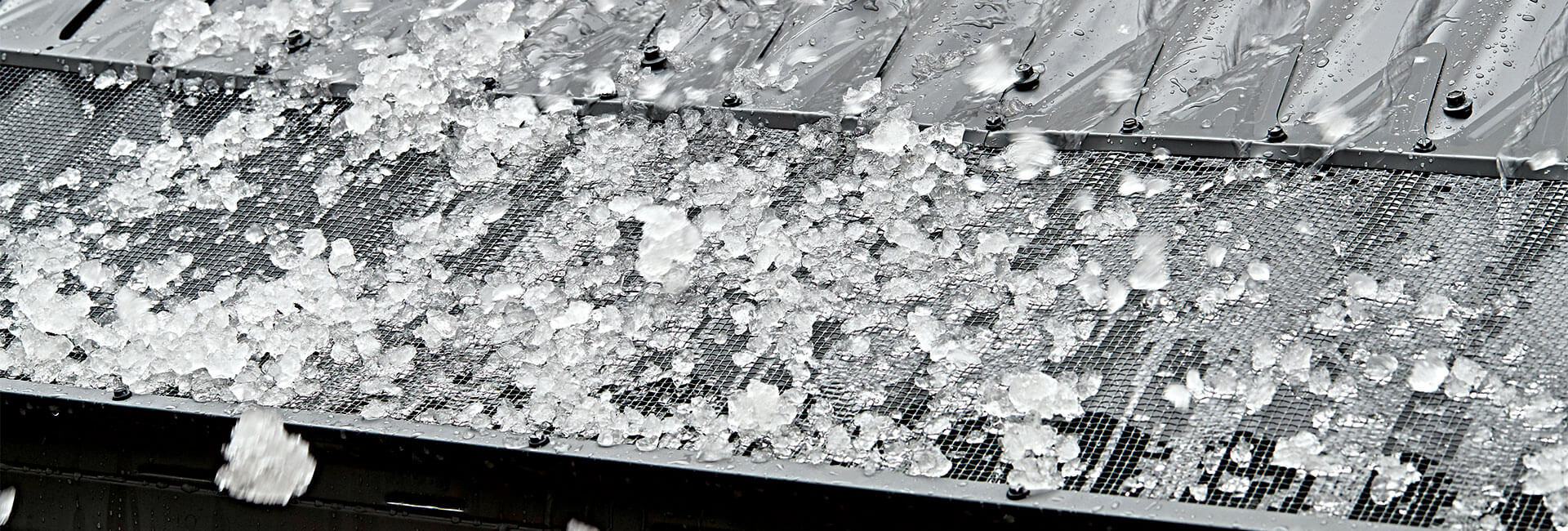Gutter mesh is designed to help defend your home against serious threats such as clogged gutters, pest invasion, flooding and even bushfire.
However, if your gutter mesh tears or rips under the pressure of significant weight and strain, its ability to defend your home can be severely compromised.
Gutter mesh rips and tears can be caused by a range of factors, but one significant threat you may not have considered is the weight of accumulated snow and/or hail.
Snow in Australia
People don’t often associate snow with Australia, but many Australians do live in snow-prone areas including the Snowy Mountains in NSW and elevated parts of Tasmania. In these locations, accumulated snow can pose a real threat to your gutter mesh integrity.
Depending on its water content, snow can be surprisingly heavy. A square metre of 10 cm deep snow weighs between 10 and nearly 100 kg – a pretty significant weight to bear. Because of this, load-bearing capacity is a key factor when choosing gutter mesh for homes in snow-prone areas, as you don’t want your mesh to collapse or tear under the strain.
Hail in Australia
Severe and damaging hail storms are common in many major population areas across Australia. One recent example of the severity and damage hail can bring is Brisbane’s November 2014 hailstorm, which caused over a billion dollars of damage.
Hail is even heavier than snow, and it tends to accumulate much more quickly. Because of this, accumulated hail poses a considerable threat to gutter mesh for homes across Australia. If you live in a hail-prone area, it’s once again important to consider load-bearing capacity when you select gutter mesh for your home for greater peace of mind.
Gutter mesh strength & load-bearing capacity
The load bearing capacity of Blue Mountain Co Gutter Mesh was independently tested using in-situ shear testing.
Shear testing involves progressively increasing the amount of weight borne by an item in order to measure the point at which it gives way. These tests were performed on all our gutter mesh products. For more realistic results, the mesh was installed with recommended trims to ensure it mirrored how our mesh would perform in real-life scenarios.
While aluminium gutter mesh proved to be strong and durable, our steel gutter mesh products demonstrated superior load bearing capacity. Because of this, if you live in an area where snow or hail is likely to accumulate on your home, it may be wise to select steel gutter mesh for your gutters.
(On a related note, our testing showed that steel gutter mesh is also better able to withstand puncturing from hail.)
Mesh Matcher
Snow and hail compatibility can be compelling buying factors when choosing gutter mesh for your home, but they’re not the only factors you should consider.
Leaf size, bushfire risk and even the colour of your roof can all affect the suitability of different gutter mesh options.
So to help you choose the most appropriate gutter mesh for your home, we’ve put together Mesh Matcher. Quick and easy to use, Mesh Matcher asks the right questions to help you learn which gutter mesh options are appropriate for your home. Try the Mesh Matcher today.
